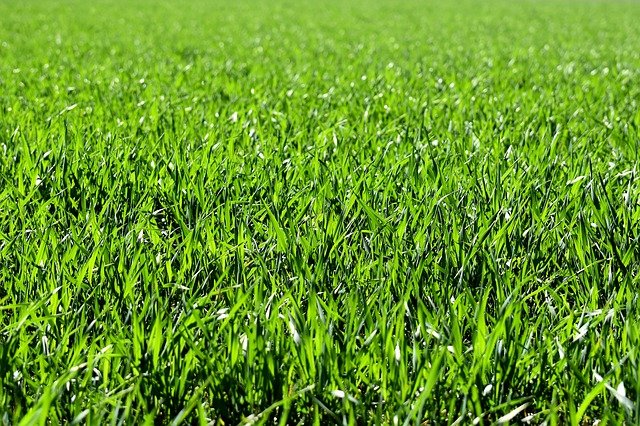Having a healthy, luscious piece of lawn in the front or back garden is what every homeowner dreams of, especially if you have a lot of people passing by that can see. I mean, who doesn't want to be the envy of the neighbourhood, right? Well, in order to achieve the lawn of dreams, you need to know how grass works and the best ways to make it grow. If you don't, you'll soon realise that your dreams of a green meadow are quickly turned to brown waste. So, exactly does grass need to live and how can you ensure that your lawn doesn't die out? Lawn & Weed Expert are here to help!
Read on to find out what your grass needs to live and how you can help to achieve the lawn that you've always wanted.

Growing Your Grass
In order for the grass on your lawn to survive and prosper, it needs four things. These are:
- Water
- Sunlight
- Soil
- Nutrients
Let's take a closer look at each of these four important components.
Water
The first major factor in keeping grass alive is water. Typically, rainfall will provide enough water for grass to live but in order to keep your grass looking consistently green, it does require supplementary watering. Instead of using an irrigation system that works on a consistent schedule, preserve your water by watering your lawn only when it needs it. Look out for telltale signs such as wilting or curled leaves, visible footprints and grass that's turning a greyish colour. Be sure to apply enough water to soak the top six inches of your soil as this will encourage your lawn's deeper roots to survive any droughts that can occur.
Sunlight
The second component involved in keeping grass alive is sunlight. Most grass types typically require around four to five hours of sunlight a day in order to survive, although different species have varying light requirements. Therefore, it is very important that you understand the type of grass that you have in your lawn so you are able to help it get the right amount of light that it needs to live. Without the right amount, growth will begin so slow and the leaves will tun long and thin, taking away from the attractive, thick appearance you're striving for.
Soil
Soil maintenance is the third factor in keeping your grass alive and there are a number of things that you can do in order to achieve healthy soil. The first is to avoid over-fertilisation. There's nothing wrong with giving your grass a little helping hand every now and then but by over-fertilising, you will be encouraging rapid growth which can lead to the build-up of thatch. The next thing to do is to use insecticides and pesticides only when you absolutely have to as these will work to kill good, beneficial creature such as earthworms that contribute to the health of your soil. The final that you can do to promote healthy soil is to aerate it during late spring or early summer as this 'opens up' the soil, allowing essential nutrients and water to reach the grassroots.
Nutrients
As we've just mentioned, the final thing that's needed to keep grass alive is a good supply of nutrients. Often, lawns can be deprived of essential nutrients that are needed to enable it to grow and as a result, fertilisers are used. These provide your grass with nutrients that allow it to flourish and grow thick blades which creates that lush, green appearance. A lawn that has inefficient amounts of nutrients will grow slowly and have grass that begins to turn yellow and dull-looking.
By ensuring your grass receives the right amount of these things, not only will you keep it alive but you will encourage very healthy growth! If your lawn has seen better days, there are a number of things we can do to help - call XYZ to speak to Lawn & Weed Expert.
Request a FREE Lawn Survey
Don't miss an update - be sure to follow Lawn & Weed Expert on Facebook and Twitter!